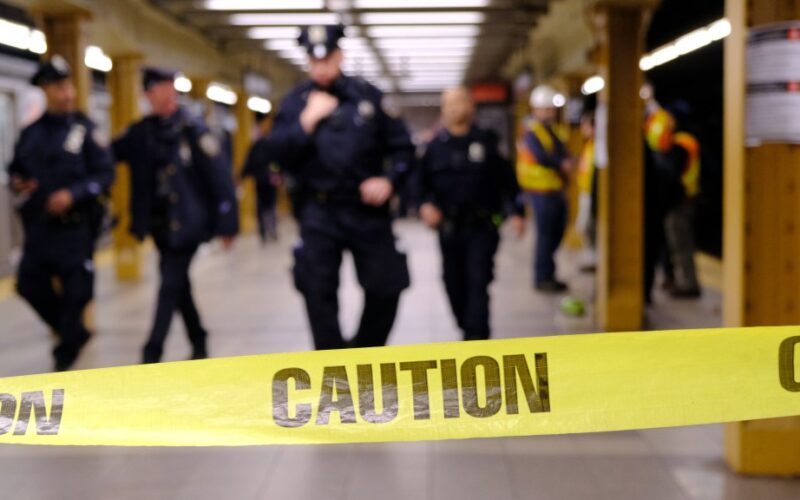At last week’s House hearing, Manhattan Rep. Jerry Nadler claimed, “The numbers don’t lie” about crime in the NYC subway. But what I’ll show you is that the statistics Democrats like Nadler hold on for dear life to have been cherry picked and mask the Big Apple’s fundamental problem with crime.
You see, crimes haven’t disappeared — they’ve been redefined. Dangerous offenders aren’t being stopped — they’re being released under laws Albany passed and some prosecutors refuse to challenge. Even as police do their job, cases are dropped, charges are delayed, and justice is deferred. Numbers are being tortured to tell a cleaner story — but riders know the truth, because they’re living it.
Yes, overall “major felonies” in the subway system are slightly down — about 5.4% from last year and roughly 11.4% from 2019, dropping from 2,499 reported incidents in 2019 to 2,213 in 2024. But that headline hides what’s really happening underground: a dangerous and growing surge in violence.
Since 2019, felony assaults in the subway have risen more than 53%, from 374 incidents in 2019 to 573 in 2024. This year alone, felony assaults are flat compared to 2023 — but still far above pre-reform levels. Meanwhile, reported rapes have doubled over that same five-year period. In total, violent index crimes in the subway system rose from 974 in 2019 to 1,177 in 2024 — a 21% increase.
These aren’t partisan talking points — they’re the data Nadler refuses to mention. He’s been in Congress since 1992, long enough to witness subway violence plummet in the late ’90s and early 2000s — and now long enough to see it surge back. In 1996, there were more than 3,000 violent felonies in the subway. By 2009, that number dropped below 1,000. Today, it’s rising again — and fast.
And while officials argue over indexes, riders live with the reality. This isn’t about how safe the system looks on a spreadsheet. It’s about how safe it feels on the platform. To the woman riding home late, the senior headed to a doctor’s appointment, the student on an unfamiliar line — the fear is real. They don’t fear “index crimes.” They fear being shoved, stabbed, or worse.
They have reason to. In December 2024, a woman was murdered by being burned alive on a subway car after a man set her clothing on fire using a lighter. That same month, a man was fatally stabbed at City Hall station — during rush hour. These attacks may be statistically rare, but they shape public perception — and rightfully so.
Meanwhile, the very definition of crime has changed. With New York’s 2019 bail and discovery reforms, entire categories of offenses — including many violent ones — are no longer detainable. Judges are barred from considering public safety. Prosecutors face punishing deadlines and disclosure burdens. Even when they want to act, they often can’t.
New York’s Raise the Age law has further skewed the picture on transit crime. Since 2019, most 16- and 17-year-olds are no longer prosecuted as adults — even for violent felonies. Instead, their cases are routed to Family Court, where they often don’t show up in the felony statistics reported by the NYPD or MTA. Opinion of the policy aside, that’s critical, because teens have been involved in a growing number of subway robberies, assaults, and group attacks. In fact, juvenile arrests for violent felonies — including many in and around transit — increased in both 2023 and 2024, but these offenses were largely excluded from public crime data. The result? Riders are told violent crime is down — even as they witness more with fewer consequences.
In fact, a 2023 NYPD analysis revealed that 327 individuals were arrested more than 6,000 times over just two years — and repeatedly released under current law. In the Bronx, the district attorney’s office dropped 69% of its cases in 2022, up from just 27% in 2019, citing impossible timelines under new discovery rules.
So yes, some categories of crime are “down” — but only because New York State redefined the crimes, removed prosecutorial tools and discouraged enforcement. This isn’t a decline. It’s a disguise.
New Yorkers deserve better. We need more police in the system, better mental health response, modern surveillance and real accountability. Most of all, we need the courage to confront reality — not manipulate it.
Because the subway isn’t just a symbol of New York — it’s a test of whether public safety still matters. And the numbers are only part of the story. The truth rides with the passengers.
Molinaro, a former member of Congress from New York, has been nominated by the president to lead the Federal Transit Administration, where he currently serves as senior advisor.








